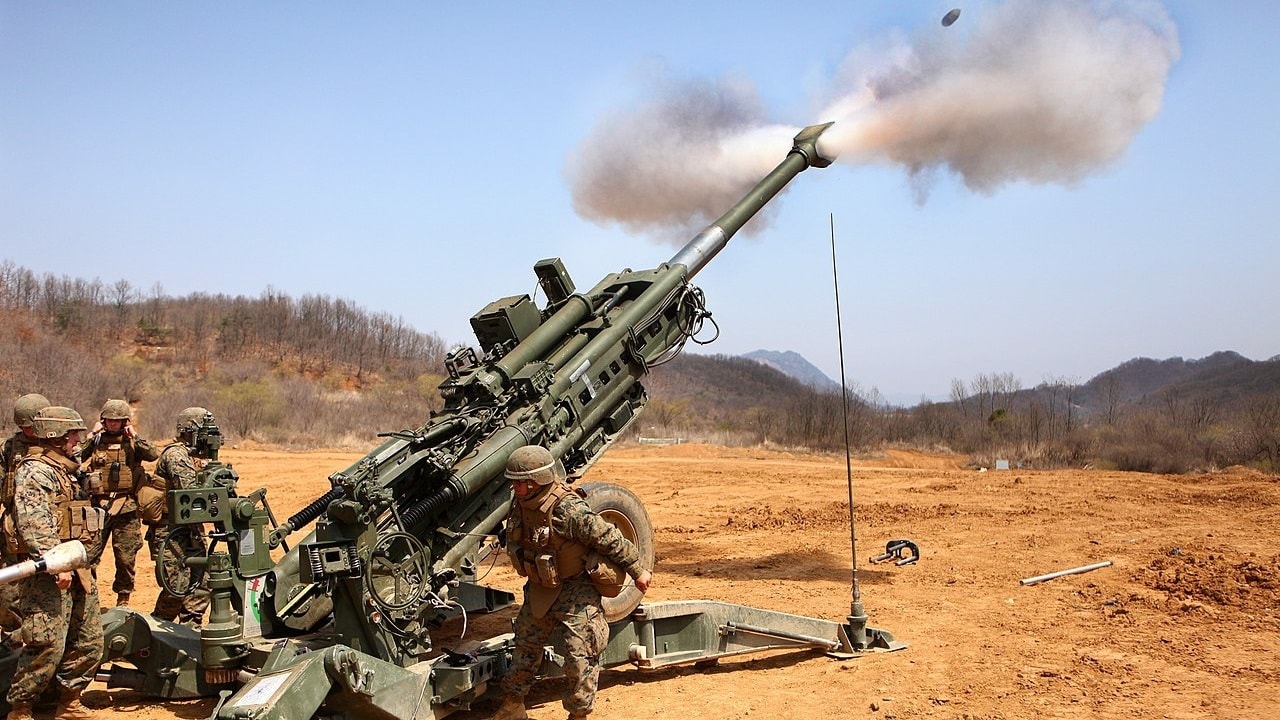Acquiring the most sophisticated military platforms like fighter aircraft and naval carriers may have attracted greater global attention, but much cheaper and elementary war material, like gunpowder, technically described as propellants, is now increasingly becoming “hard to find.”
Here, China is proving to be a global threat as it monopolizes the supply of nitrocellulose, a raw material made from Chinese cotton fibers.
China has reportedly stopped deliveries of cotton to make powder, prompting the leading military powers of the world, including the United States, Russia, and France, to find alternate sources and become self-sufficient.
Experts describe propellants as pyrotechnic charges that combine combustible and oxidizing substances. This allows them to react without an external supply of oxygen and thereby generate large volumes of combustion gases in a short time. These combustion gases can propel a projectile through the barrel of a pistol, a rifle, an automatic cannon, or a gun. They can also propel ground, air, or sea-launched solid-fuel missiles of both guided and unguided types.
However, during wars or military drills, artillery accounts for the bulk of propellant consumption. In other words, a shortage of propellants or gunpowder adversely affects a country’s firepower.
This hard lesson has been quite evident in the ongoing war in Ukraine. The shortage has badly hamstrung Ukraine’s military campaign.
A study in the United Kingdom by the Royal United Services Institute for Defence and Security Studies has estimated that Russian troops fired a total of around 20 million artillery and mortar shells in 2022 and 2023. Because of the supply shortage, the Ukrainian defenders’ ammunition consumption is supposed to have been around a quarter of this.
AfriPrime App link: FREE to download...
So much so that, on March 2, at a gathering of Kyiv’s allies in Paris, French President Emmanuel Macron admitted, “We have all become aware of the need to face up to the scarcity of some components, especially gunpowder. Powder is really what’s lacking today.”
Amos Dossi, Senior Researcher at the Center for Security Studies (CSS) at ETH Zürich, says that to cover the demand for gunpowder, Ukraine would require around five medium-sized powder factories with an annual capacity of 2,000 tons. Ukraine does not possess such a production base and is now even relying on Argentinian manufacturers in addition to European and North American ones.
However, neither America nor the European allies themselves are comfortable with their stocks of gunpowder.
As of today, the U.S. is a net importer of nitrocellulose. That is why Republican members of Congress have announced legislation to prod the Biden administration to conduct an inventory of the U.S. gunpowder supply chain and offer suggestions to ensure enough will be available for the military and the average consumer (gun users).
Sen. James E. Risch, Idaho Republican, and Rep. Tom Emmer, Minnesota Republican, are leading the effort. As Emmer says, “ As threats to our nation’s security evolve, it is more important than ever to take proactive measures to secure our ammunition supply chain. This is not only about enhancing our military readiness but also supporting American manufacturing and ensuring law-abiding Minnesotans and Americans can exercise their Second Amendment rights (Right to Bear Arms)”.
The bill states that “Congress remains concerned about the domestic supply and production of nitrocellulose” and worries that a supply chain failure “could restrict ammunition manufacturing for large and small calibers, harming the commercial marketplace and placing the warfighters at risk.” Therefore, the legislation would require a report within 180 days on sources of nitrocellulose, nitroglycerin, and acid production, and recommendations for broadening production and preventing supply chain chokepoints.
Even Russia is trying to localize the production of artillery gunpowder from its own raw materials to reduce dependence on foreign supplies. It has begun commercial production of gunpowder from alternative raw materials, such as wood and flax pulp.
Interestingly, The Wall Street Journal reported on March 29 that Russia was still producing little nitrocellulose, the main component of artillery gunpowder brands, and relied more on raw materials from abroad. According to the report, in the first year of Russia’s invasion of Ukraine, imports of these products increased by 70% in 2022. By mid-2023, 3,039 tons had been imported, almost twice as much as in 2021.
According to the report, almost half of Russia’s current nitrocellulose imports go through a small Turkish company, Noy. Through this company, Russia buys nitrocellulose produced in the US, Germany, and Taiwan.
It is said that the German subsidiaries of New York-based International Flavors & Fragrances sold at least 80 tons of nitrocellulose to Noy, which then shipped the products to Russia.
Taiwan’s TNC Industrial produced more than 500 tons of nitrocellulose, which Noy shipped to Russia last year. In addition, the Russian importer Analytical Marketing Chemical Group has received nitrocellulose from Taiwan over the past two years worth almost $700,000. The organization’s website states that it is a regular partner of Russia’s Kazan Gunpowder Plant.
As far as Europe is concerned, the European Commission reckons the bloc will be producing two million shells a year, and for this, it is subsidizing factories aimed at increasing powder production. The Commission wants the European gunpowder manufacturers to diversify their sources of supply (mainly China) of the raw material, but alternate sources of the powder, like India and Thailand, are found to be inadequate. So, work is in progress by investing in new solutions such as wood cellulose.
Existing plants in Europe are being modernized for increased production, according to reports. These include the European market leaders Rheinmetall (Germany), Eurenco (France), KNDS (Belgium), and Nammo (Norway) and relatively new ones like Karlskoga (Sweden), Aschau (Germany), Wimmis ( Switzerland), Pardubice (Czechia), and Granada (Spain).

New plants are planned in Hungary and Romania, among other places. In Bergerac (France), a historic facility is being reactivated on a large scale. Apparently, proposals are on to convert plants in Eastern Europe (that were previously producing to ex-Soviet standards) to NATO standards.
However, as Amos Dossi rightly points out, upgrading and installing new plants in the Western world is not that easy, given the factors of environmental regulations, energy, and labor costs, as well as marked difficulties in finding suitable production sites and skilled workers.
Of course, the best way to deal with the situation is to ensure that conventional wars are not dependent on firepower, particularly artillery. This can be done if modern weapons, such as electrically powered drones, laser weapons, and electromagnetic guns, prove to be good enough instead of large-caliber guns and missiles.
However, such a situation is far away as it is not foreseeable to what extent advances in target detection and tracking, as well as electric propulsion, can contribute to the displacement of conventional artillery.
Thus, artillery will remain important for the foreseeable future. That means gunpowder will remain in high demand. Therefore, removing the bottlenecks in its production and supply chain (which means dealing with the China factor) will be a huge challenge for every government to ensure national security.
AfriPrime App link: FREE to download...


